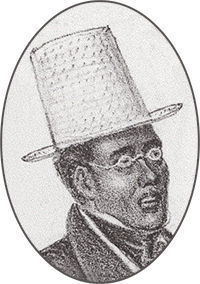From Liberty to Freedom: The Basil Dorsey Story
While In New York, Dorsey met abolitionist David Ruggles, secretary of the New York Committee of Vigilance, editor of the abolitionist newsmagazine, Mirror of Liberty, and owner of the first known black-owned bookstore in the U.S. Ruggles helped over 600 self-emancipated blacks like Dorsey resettle in free states or go onto Canada.
In 1844, Dorsey moved his family to what is now the Village of Florence, where the Northampton Association of Education and Industry, a utopian community based on equality, had been established. Though there is no record of him joining as a member, we know Dorsey purchased goods at the community store.
By 1850, forty-year-old Dorsey was remarried to nineteen-year-old Cynthia Jones, an African-American woman whose parents were from Pittsfield. They lived in the house on Nonotuck Street with his four-month-old baby, Louisa, and Dorsey's other children, Charles and John. With them lived the Jacob Benson family of Maryland, themselves likely freedom-seekers.






















